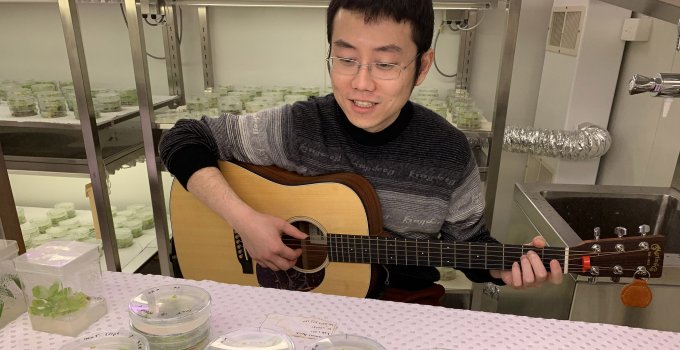PS PhD Exit Seminar: Monocot Rubisco meets Dicot Chloroplast: A Structure-Function Relationship Study
Explore the elimination of the folding/assembly incompatibility between the monocot crop (rice, wheat and maize) Rubisco and dicot model plant (tobacco) chloroplasts through a mutagenesis strategy which introduces certain amino acid substitutions into the large subunit of the monocot Rubisco.
Speakers
Event series
Content navigation
Description

The Ribulose-1,5-bisphosphate carboxylase/oxygenase (Rubisco) in higher plants is a complex constituted by 8 large and 8 small subunits. As an important enzyme which catalyzes atmospheric CO2 into organic compounds, Rubisco is also notoriously known as a slow enzyme which fixes only 3 ~10 CO2 molecules per second thus has long been a target that requires bioengineering for improvements in photosynthesis research. One of the biggest barriers that hinder (higher plant) Rubisco engineering lies in the unclearness of its highly complicated biogenesis process in chloroplasts, where the photosynthetic enzymes are produced. Monocot Rubisco’s folding/assembly requirements are not met by dicot (tobacco) chloroplasts, despite the high similarity (>90%) between the protein sequences of monocot and dicot Rubisco large subunits (LSu), which form the core of Rubisco. Preliminary studies using the E.coli expression methods have given insights into the Rubisco helper protein (chaperone/chaperonin) system (Aigner, et al. Science. 2017; Lin, et al.bioRxiv. 2019) yet the detailed mechanisms of the interactions between higher plant Rubisco and its helper proteins remain not fully explained.
Supervised by Dr. Spencer Whitney, my PhD aims at the elimination of the folding/assembly incompatibility between the monocot crop (rice, wheat and maize) Rubisco and dicot model plant (tobacco) chloroplasts through a mutagenesis strategy which introduces certain amino acid substitutions into the large subunit of the monocot Rubisco. Tobacco plants producing various monocot Rubisco isoforms were then successfully generated and the enzyme catalytic characteristics were measured for comparative analysis. The potential key amino acid residues involved in the Rubisco subunit-chaperone/chaperonin interactions were identified/hypothesized. Nevertheless, further experimental evidences are still in need for the fulfillment of the Rubisco biogenesis theories. Though very limited, I would like this study to provide some practical basis and possible directions to future higher plant Rubisco engineering or related researches.
Biography
Ding is a PhD candidate from the Whitney group, PS department, RSB, ANU. His study is funded by the ARC Centre of Excellence for Translational Photosynthesis. Before coming to the ANU Ding spent most of his time “lamping-up” hard, which means he struggled a lot only to make his own life more difficult (e.g. determined to get a PhD), though himself insisted what he did was crucial for the seeking of the truth…
…And he still does. :D
Location
Eucalyptus Room (S2.05), Level 2, RN Robertson Building (46), ANU




